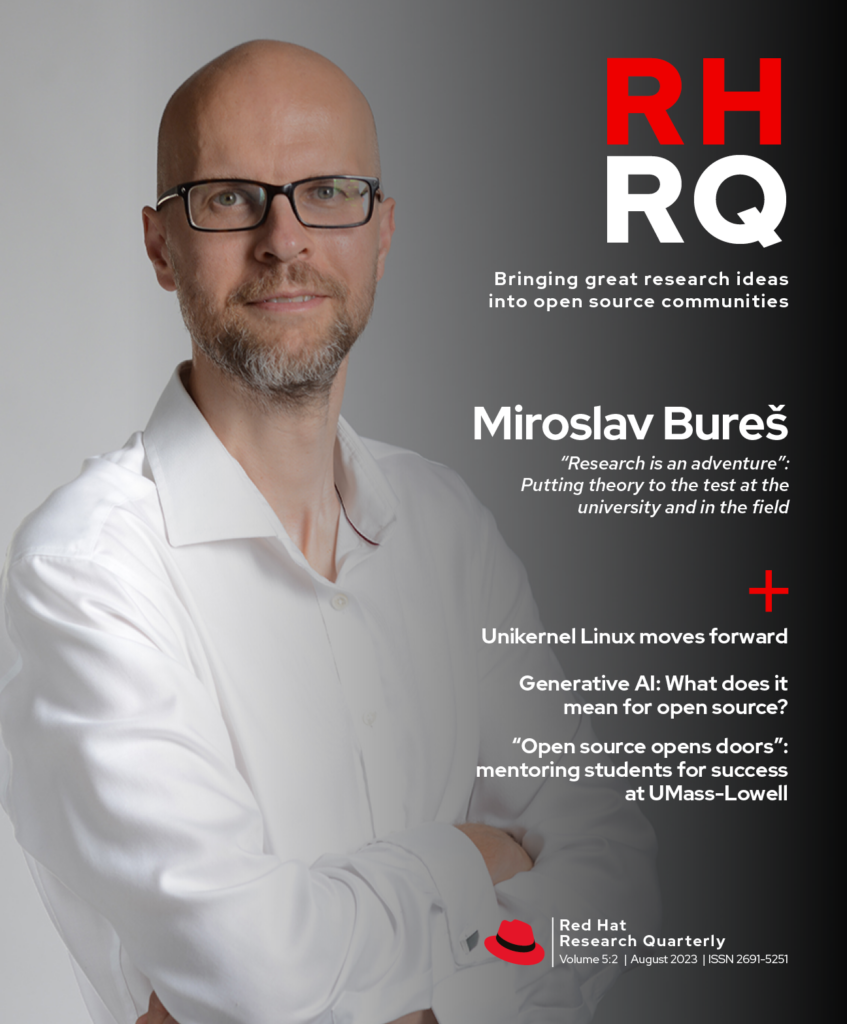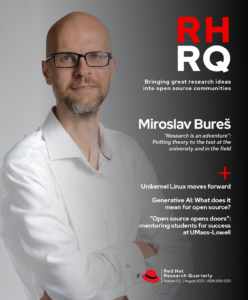One of the funny things about research is you never know what you’re going to get. In fact, the uncertainty of research is not just unavoidable—it’s desirable. Scientific breakthroughs like penicillin and even X-rays were the result of attentive scientists noticing something interesting while pursuing something else, then applying the same rigor to the new path that they would have for their original thesis. If this teaches us anything beyond the virtue of attention to detail in research, surely it is that in planning and especially funding it, we must pay as much attention to the researcher doing the work and the field they work in as to the specific question they propose to answer.
What launched me down this line of thinking is our long-running UKL project, with the original aim of producing a Linux-based unikernel. A unikernel is a software application that is built into a single binary along with the kernel and operating system that will support it, and that runs in the same privileged space as that kernel. Although there are, of course, security concerns with running an application this way, major performance gains can be realized through bypassing parts of the kernel not needed for the particular application running in this mode. Rich Jones’ piece in this issue on the research to date describes the successful results in detail, as well as the latest twists and turns that may make building the application along with the kernel unnecessary. Instead, we may have actually discovered a way to write a user-space application that can effectively act as a device driver through controlled privilege escalation. This is not at all what we were looking for, but it may turn out to be substantially more useful. We’ve had similar happy accidents applying machine learning to compiler optimization, as well as in tuning dynamic systems for energy efficiency.
This is not at all what we were looking for, but it may turn out to be substantially more useful.
Although I’m sure Czech Technical University (CTU) researcher Miroslav Bureš understands the value of uncertainty in research as well as anyone, his work in testing unreliable systems is mostly devoted to reducing uncertainty as much as possible. Red Hat research scientist Martin Ukrop interviews him in this issue to talk about how he designs experiments to simulate unreliable connections in large IoT installations, providing a testbed for system designers. His work, grounded in the long-time collaboration between Red Hat Czech and CTU, is finding applications with NATO troops as well as commercial systems.
And one last word on uncertainty. We thought it was past time to take a good look at the Generative AI systems that have taken the world by storm over the last year, to understand both what they are and what they mean for open source development. In this issue, our AI leader in Red Hat Research, Sanjay Arora, collaborates with leading Red Hat software licensing expert Richard Fontana to paint a comprehensive picture of what generative AI is, what it can actually be used for, whether it can be trusted (not in most cases, in my view), and whether it makes sense to talk about models being “open” or not. I did not know exactly where this article would go when we conceived it, and it went in a very different and much better direction from what I was expecting. Writing, as it turns out, is a lot like research.



